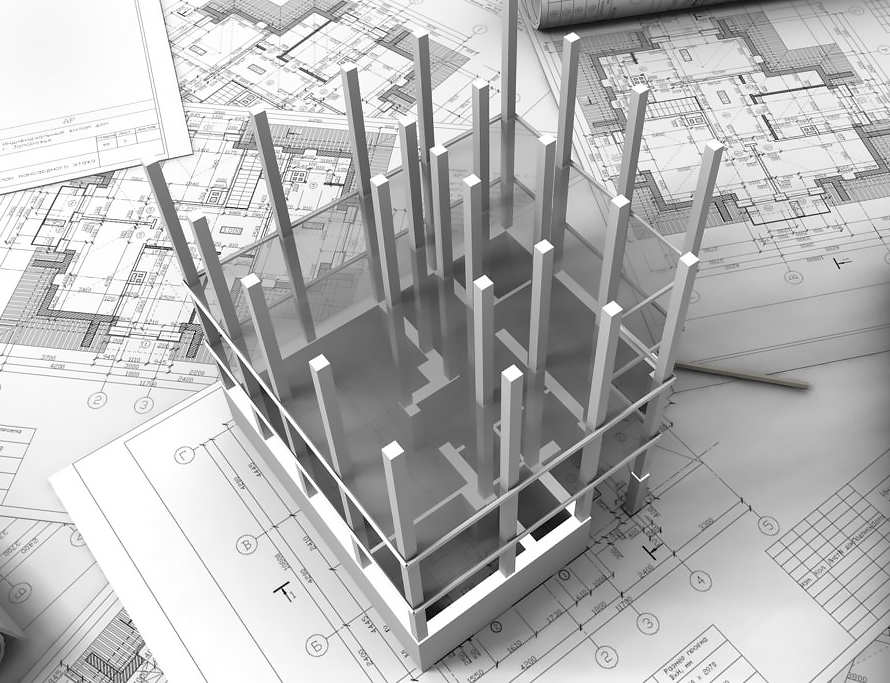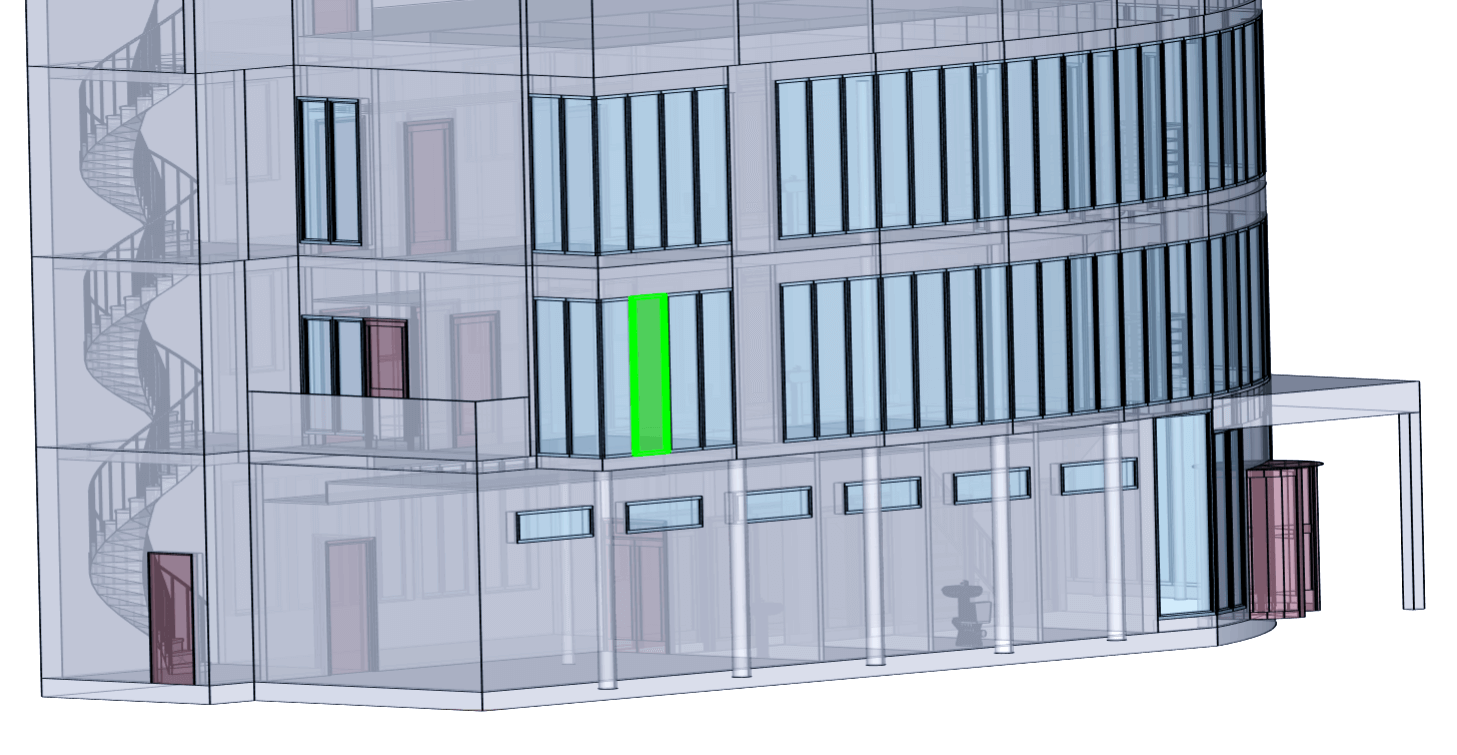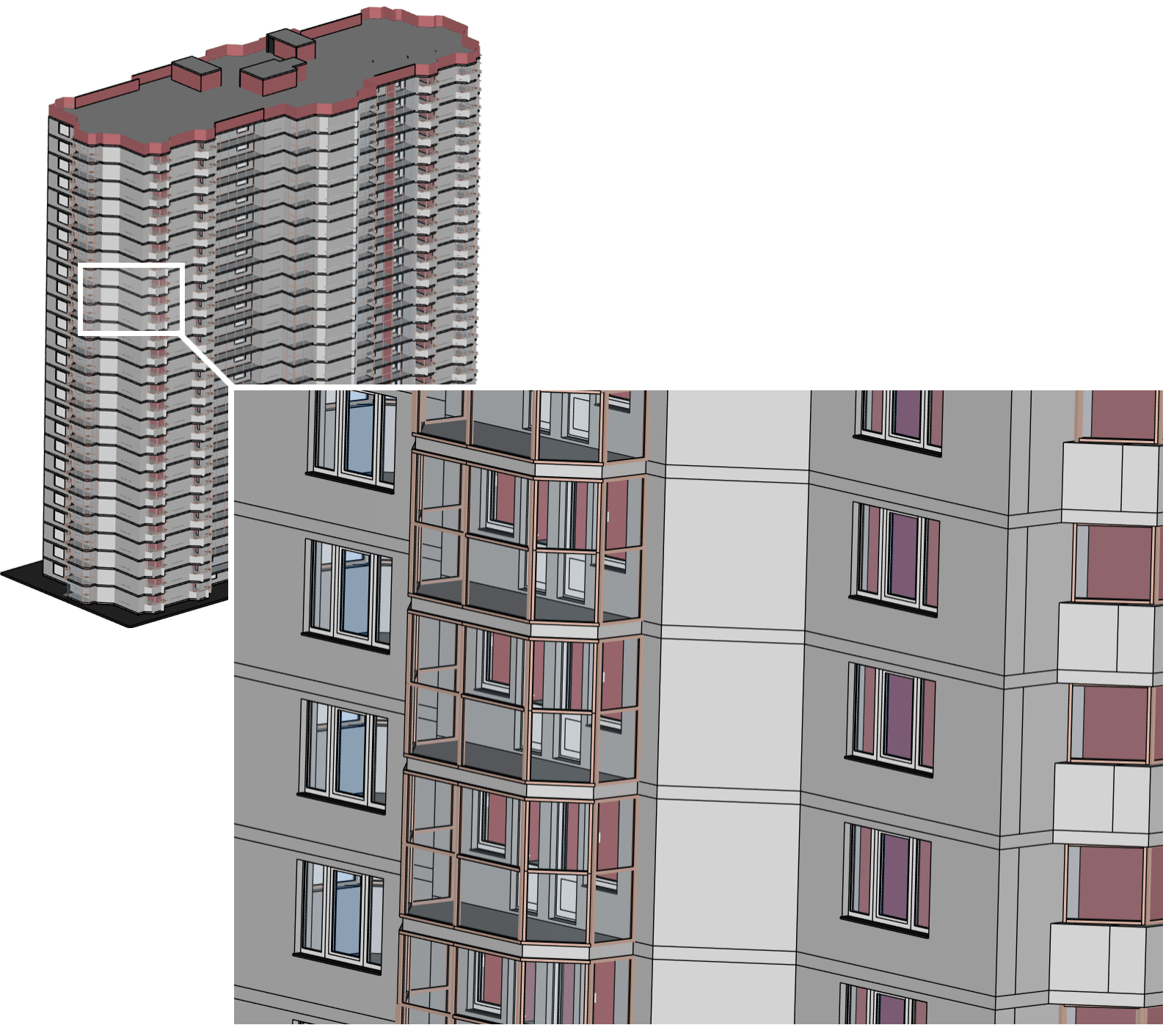3D BIM Cloud Development
Development, Platforms, Applications
- We spent 30+ person-years in developing 3D cloud BIM solutions
- LEDAS Cloud Platform creates 3D cloud solutions with simultaneous editing in either private or public environments
- Our LEDAS Cloud Platform provides IFC support and makes it easy to build 3D cloud BIM solutions
- Level of detail (LOD) technology for working with big 3D models, including BIM and civil infrastructure
Cloud Development for 3D BIM
3D browser solutions became popular in engineering software in mid 2010s, when support of WebGL, new web protocols and JavaScript features facilitated the building of 3D web applications with advanced logic and UI. LEDAS immediately became involved in challenging projects in the 3D web.
Cloud-based BIM was a primary scope, thanks to big data volumes that are usual for BIM software projects. They require large storages and imply dispatching of work between engineers working on specific areas and layers of buildings, bridges, civil and industrial objects. These BIM requirements were in good correspondence with existing cloud web capabilities, including established large-scale platforms like Amazon Web Services (AWS), Microsoft Azure, or Google Cloud Platform (GCP). Also, less number of competitors in CAD software for BIM (w.r.t. MCAD) propelled interest of start-ups and established companies to develop brand-new BIM-in-cloud software services and platforms.
Our first case in the BIM Cloud was a complex project that combined Architecture, Structure, Mechanical and Engineering design, as well as other related modules. It was focused on providing wide support of BIM entities typical for Autodesk Revit or Solibri Model Checker (IFC-based quality control solution). Usage of 3D modelling kernel made it possible to have all needed capabilities for creation and editing of sophisticated shapes.
In order to meet extensive requirements like fire-prevention, ventilation, accessibility, and many others, we have developed a dedicated BIM verification module in this 3D BIM application, which also took care of collision detection. Thanks to integration with the 3D scanning process and point cloud data management, later stages of the BIM lifecycle, including dynamic construction control and maintenance of buildings and constructions, were covered. The developed solution was full-functional 6D BIM, with detailed planning of related costs, resources, tasks, workers, and dates.

Our Platform for 3D Web BIM Projects
Later we decided to meet contemporary CAD market needs by developing our own 3D browser platform with BIM and MCAD as primary goal areas. So we created LEDAS Cloud Platform, a multi-user 3D-in-web system with support of many files formats and collaboration capabilities. It is better to get more details about LCP on the dedicated page.
Several companies licensed LCP in order to speed up their web BIM product development. Part of them were focused on civil BIM projects in the Cloud, while others were more interested in industrial 3D web systems and applications. LCP was a good start for the licensees, but most of them wanted to provide a richer set of functions to their customers.
Some LCP licensees ordered 3D web development services from LEDAS with the goal to add new functions and features, and shape the BIM products according to their vision. We satisfied their requests, making development in JavaScript on the client side, and writing C++ and Python code on the server side. One of the products was focused on big industrial models that are hard to visualize in the 3D web environment due to memory limitations. That is why we at LEDAS developed level-of-details technology for 3D web.

Efficient LOD for Huge 3D Models in the Cloud
Models of electric power plants, bridges, and large buildings can contain thousands and even millions of elements. Millions of elements translates into even more millions of polygons. These numbers exceed the capabilities of even the latest Web browsers. To deal with them, we implemented a number of new LOD (levels of detail) techniques and heuristics. A LOD system uses several levels of representation of each object, from coarse (faster) to detailed (slower). This allows users to see both the big picture (with coarse LOD) and detailed structures of particular elements (with detailed LOD) at reasonable FPS (frames per second) rates.
Typical LOD optimization tactics include simplified representations of objects; sorting and visualizing objects on the basis of size; taking camera position into account; and instancing of otherwise identical elements.
We deployed additional techniques so that our LOD routines are properly integrated and well tuned:
- In the cloud, the server stores all levels of representation of objects
- On the desktop, our Web client displays only the minimally necessary level of representation for each object
- We optimize the workload of the Web browser, as well as the amount of data transferred between client and server
- Our routines make wise selections of which LOD to apply now in the Web application for each object
- For better efficiency, our team developed dedicated protocols of client-server communication on the basis of WebSocket. As a result, our optimization techniques make working with huge data sets in Web browsers almost as smooth as on the desktop.
Contact us to implement the LOD techniques in your web solution!
